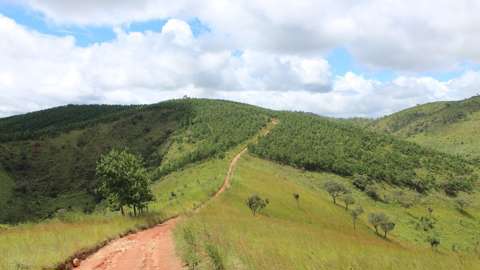Reforestation as a climate solution - the Swedish example

The text and the report below are based on a presentation at COP30 in Belém, Brazil, 10–21 November 2025.
From barren heaths to thriving forests
Sweden’s journey from deforestation to forest prosperity may offer a hopeful model for the world.
In the mid-1800s, Sweden faced severe deforestation and poverty. Forests had been cleared for fuel and construction without replanting, leaving behind barren landscapes. Southern Sweden, once rich in forests, became dominated by low-productivity heathlands.
A turning point came with the Forestry Act of 1903, the world’s first modern forestry law, which mandated replanting after logging. Organizations like The Forest Society mobilized communities to restore forests, transforming the deforested landscape and thereby economy.
Global reforestation potential
As a tool for mitigating climate change, scientists have explored how reforestation could help fight climate change. Forest’s ability to absorb carbon dioxide (CO₂), makes them a powerful tool for climate mitigation. A 2019 study estimated that 900 million hectares of land worldwide could be reforested, potentially removing 205 gigatons of carbon from the atmosphere — nearly two-thirds of the carbon humans have added.
However, newer studies caution that practical challenges — such as land use conflicts, biodiversity risks, and water availability — reduce this potential. Even so, 389 million hectares remain viable for reforestation, offering significant climate benefits.
Forests, carbon and the substitution effect
Sustainably managed forests can increase carbon storage, reduce fossil feedstock use, and support long-term climate goals. When trees are harvested before reaching maturity and replaced with new ones, forests continue absorbing CO₂. Products made from wood also store carbon and can replace fossil-intensive materials.
The demand for renewable fossil-free products is market-driven, and the demand for forest raw materials is therefore increasing. Using forest products instead of fossil-based, avoids emissions — this is called the substitution effect.
Recycling enhances this effect. In Sweden, recycling forest products after use doubles the climate benefit, especially through paper recycling.
We will review and publish your comment as soon as possible.

